Breville Barista Express Review: Is It Worth It? (2025)
Six months ago, I unboxed my Breville Barista Express with the skepticism of someone who's tested dozens of espresso machines. Could this all-in-one really deliver on its promise of café-quality espresso at home? After pulling over 1,000 shots, steaming gallons of milk, and teaching three neighbors how to use it, I have answers that might surprise you.
The Barista Express BES870XL isn't just popular by accident, it's sold more units than any other prosumer espresso machine for good reason. But popularity doesn't always mean perfection. This machine demands patience, rewards practice, and occasionally frustrates even experienced baristas. Let me share everything I've learned about living with this coffee icon daily.
Quick Verdict: Who Should Buy This?
Perfect for: Home baristas willing to learn, coffee enthusiasts wanting to understand espresso, anyone ready to invest time for exceptional results
Skip if: You need instant gratification, want fully automatic operation, or refuse to spend 10 minutes learning each morning
Rating: ⭐⭐⭐⭐½ (4.5/5)
Current Price Range: $500-700
Breville Barista Express
All-in-one espresso machine with built-in grinder and pressure gauge for café-quality coffee at home.
- Built-in grinder with 18 settings
- Analog pressure gauge for learning
- 45-second ThermoCoil heat-up
- Best value in its class
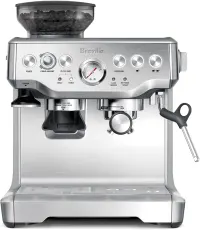
*Price and availability may vary. Click to see the latest offers.
Breville Barista Express
All-in-one espresso machine with built-in grinder and pressure gauge for café-quality coffee at home.
- Built-in grinder with 18 settings
- Analog pressure gauge for learning
- 45-second ThermoCoil heat-up
- Best value in its class
First Impressions and Unboxing
Opening the Barista Express box feels like Christmas morning for coffee lovers. Breville's packaging impressed me immediately, every component nestled in protective foam, accessories organized in a separate box, and a genuinely helpful quick-start guide that actually makes sense.
The machine itself commands attention. At 23 pounds of brushed stainless steel, it looks and feels like equipment that belongs in a café. The analog pressure gauge dominates the front panel, flanked by simple buttons that thankfully avoid touchscreen gimmicks. Build quality exceeded expectations, every dial clicks satisfyingly, the portafilter locks smoothly, and even the drip tray slides out without wobbling.
Setup took 20 minutes including initial rinse cycles. The water tank fills easily from the top (thank goodness), and the bean hopper's half-pound capacity means less frequent refilling than expected. My only initial concern was the 54mm portafilter, smaller than the commercial standard 58mm, but this worry proved unfounded in practice.

Design and Build Quality
Living with the Barista Express reveals thoughtful design choices that photos don't capture. The integrated tamper magnetically attaches behind the grinder, always within reach but never in the way. The grind size dial underneath the hopper adjusts easily even with beans loaded, a detail competitors often bungle.
Footprint management deserves praise. At 16" wide by 13.5" deep, it fits standard counter depths while leaving room for cup warming on top. The height allows sliding under most upper cabinets when not in use. Cable management keeps things tidy with a rear cord wrap.
Materials feel appropriate for the price point. The stainless steel exterior resists fingerprints reasonably well, though not perfectly. Internal components use quality plastics where metal isn't necessary, keeping weight manageable. The portafilter and steam wand are solid metal, not chrome-plated plastic like budget machines.
After six months of daily use, wear signs remain minimal. The steam wand's positioning still holds firmly, button labels haven't faded, and the water tank's handle shows no stress cracks, common failure points on cheaper machines.
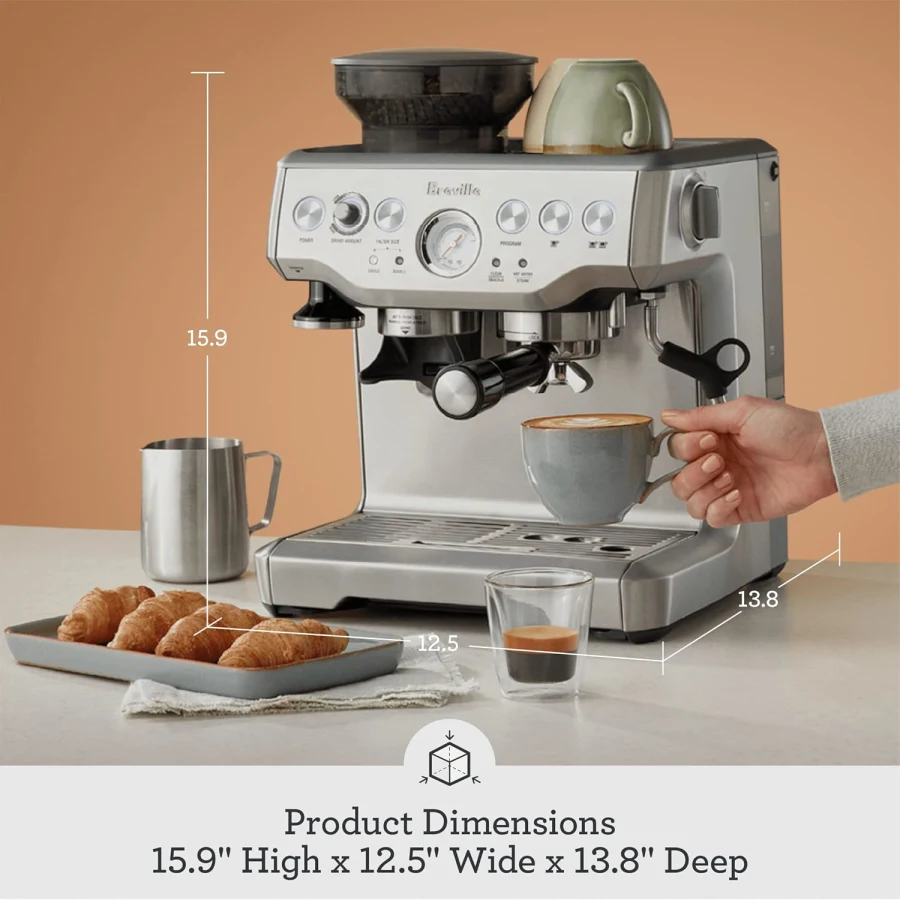
The Grinder: Make or Break Feature
The integrated conical burr grinder transforms this from another espresso machine into a complete coffee system. Having tested it against my standalone Baratza Sette 270, the results surprised me.
Eighteen grind settings sound limiting compared to infinite adjustment grinders, but each click represents a meaningful change in extraction. Settings 8-12 handle most medium roasts perfectly, while 5-8 work for darker beans. Light roasts sometimes fall between settings, my only real grinder complaint. If you're using specialty coffee beans, you'll want to dial in carefully for optimal results.
Dose control happens through timed grinding rather than weight, which requires adjustment when switching beans. I've settled on 16 seconds for most coffees, yielding approximately 18 grams. The included razor tool levels doses consistently, though I prefer using a scale for precision.
Grinder retention, old grounds stuck in the chute, affects the first shot after changing settings. My solution: purge 2-3 seconds of grounds when adjusting. This wastes minimal coffee while ensuring consistency.
Grinder Strengths
- - 18 settings cover most coffee types
- - Conical burrs produce consistent grounds
- - Integrated design saves counter space
- - Adjustment dial easy to use
- - Quality burr set for the price
Grinder Limitations
- - Light roasts need finer settings
- - Some grinder retention
- - Timed dosing vs weight-based
- - Limited compared to dedicated grinders
Pulling Shots: The Learning Experience
Your first shot will likely disappoint. Mine certainly did sour, weak, and nothing like café espresso. But here's the secret: the pressure gauge teaches you faster than any manual could.
The gauge shows extraction pressure in real-time, with the espresso range clearly marked. Too fast (under 20 seconds)? You'll see low pressure, grind finer. Too slow (over 35 seconds)? High pressure indicates grinding too fine. This visual feedback accelerated my learning curve dramatically.
Pre-infusion happens automatically, gradually increasing pressure before full extraction. This feature, usually found on commercial machines, ensures even saturation and reduces channeling. Understanding the science of coffee extraction helps you appreciate why this makes such a difference in shot quality.
Temperature stability impressed me more than expected from a single boiler. The ThermoCoil heating system maintains 200°F consistently, though you should "temperature surf" for optimal results, pulling shots immediately after the ready light illuminates for the sweet spot.
Single-wall (non-pressurized) baskets come standard, demanding proper technique but rewarding with superior espresso. Dual-wall baskets included for beginners create fake crema but help build confidence. I recommend starting with dual-wall, then graduating to single-wall after a few weeks.
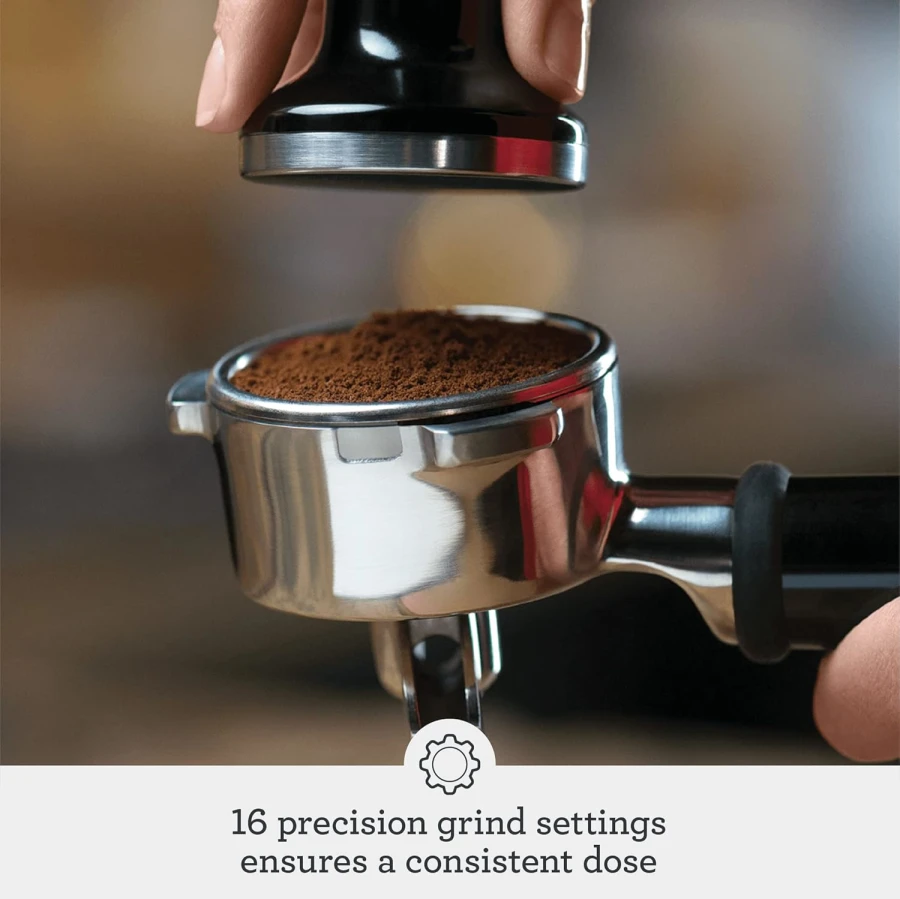
Steam Wand Performance
The steam wand divides users more than any other feature. Traditional single-hole design means slower steaming than commercial multi-hole wands, but also more control over texture. Expect 45-60 seconds to steam 6oz of milk, not instant, but reasonable.
Technique matters enormously here. Position the tip just below surface initially, creating a paper-tearing sound as air incorporates. Then plunge deeper, creating a whirlpool that produces genuine microfoam. My first attempts created either thin milk or stiff foam, nothing in between. After two weeks of practice, I could pour basic latte art.
The 360-degree swivel helps positioning, though the wand's length limits pitcher size. Anything larger than 20oz becomes awkward. Cleaning requires immediate attention, milk residue bakes on quickly if ignored. The included cleaning tool helps clear the steam hole when needed.
Power feels adequate rather than impressive. Commercial machines steam faster and more forcefully, but the Barista Express produces café-quality microfoam with patience. For the price point and target audience, it strikes an appropriate balance.
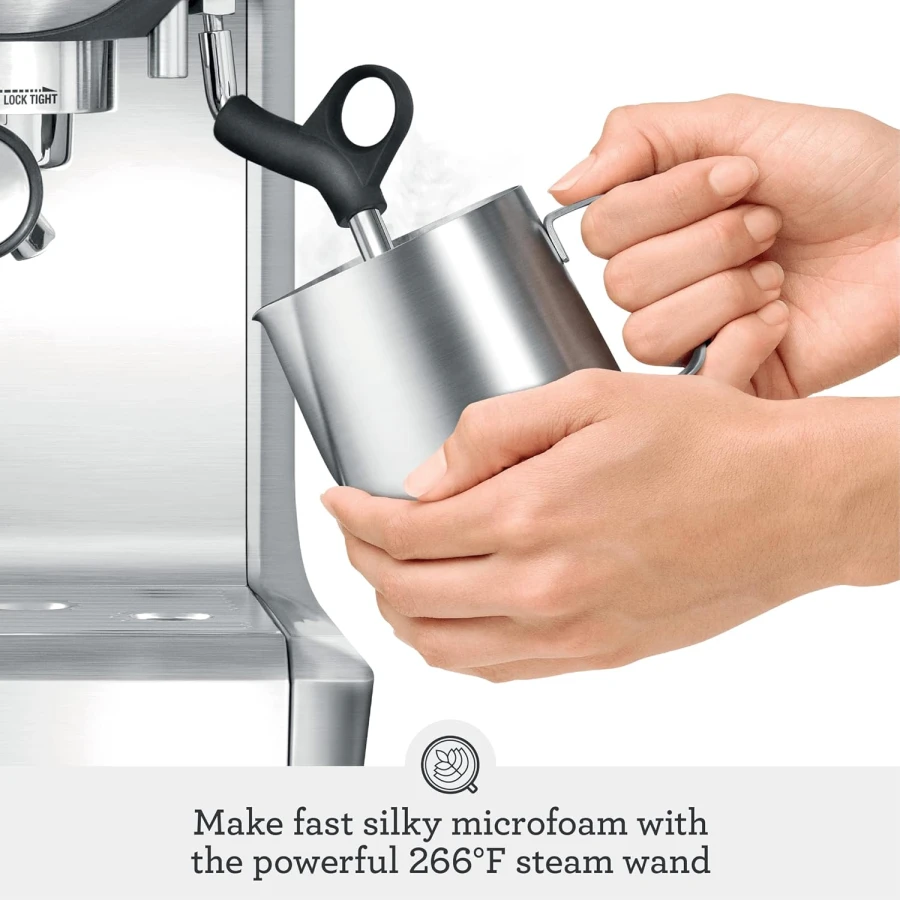
Daily Workflow and Usability
My morning routine with the Barista Express has become ritual rather than chore. Power on, wait 45 seconds for heating (I prep cups during this time), grind directly into portafilter, level with razor tool, tamp firmly, and extract. Total time from cold machine to finished cappuccino: 4 minutes.
The workflow feels natural once muscle memory develops. Grinding directly into the portafilter eliminates transfer mess. The dosing funnel attachment (sold separately but worth it) prevents overflow with full doses. Magnetic tamper storage means never searching for tools.
Multiple drinks expose the single boiler limitation. After pulling a shot, waiting 30-45 seconds before steaming prevents temperature instability. Making four lattes for guests takes 15 minutes, acceptable but not instant. The 67oz water tank handles 8-10 drinks before refilling.
User interface simplicity deserves praise. One button for single shots, another for double. Manual control overrides for experimenting. No complex menus or programming, just coffee making. The pressure gauge provides all the feedback needed without digital complexity.
Typical Morning Workflow Timeline
Maintenance and Cleaning
Daily cleaning takes two minutes: knock out puck, rinse portafilter, wipe steam wand, empty drip tray if needed. The "Clean Me" light illuminates after 200 shots, prompting a cleaning cycle with included tablets. This process takes 5 minutes and keeps the machine fresh.
Weekly tasks include removing and rinsing the shower screen (easy twist-off), cleaning the steam wand tip thoroughly, and wiping down the exterior. The grinder needs occasional vacuuming to remove chaff, every two weeks for my usage level. For more detailed maintenance procedures, check out our complete cleaning and maintenance guide.
Descaling frequency depends on water hardness. With filtered water, every 2-3 months suffices. The process takes 30 minutes following clear manual instructions. Using filtered water extends time between descaling and improves coffee taste.
Parts availability impresses me. Shower screens, gaskets, water filters, and cleaning supplies remain readily available years after purchase. This long-term support adds value often overlooked when buying.
Daily Tasks
- - Knock out coffee puck
- - Rinse portafilter
- - Wipe steam wand
- - Empty drip tray
Time: 2 minutes
Weekly Tasks
- - Clean shower screen
- - Deep clean steam wand
- - Run cleaning cycle
- - Wipe exterior
Time: 10 minutes
Monthly/Quarterly
- - Vacuum grinder
- - Descale machine
- - Replace water filter
- - Deep clean all parts
Time: 30-45 minutes
Real-World Performance Tests
Over six months, I've tracked extraction metrics obsessively. Here's what the data reveals:
Consistency
After dialing in, shot times vary by ±3 seconds day-to-day, acceptable for home use. Commercial machines achieve ±1 second, but cost significantly more.
Temperature
Measured brew temperature stays within 2°F of target across multiple shots. Impressive for a single boiler design.
Pressure
The pump maintains steady 9 bars during extraction after pre-infusion. No pressure fade during longer shots.
Recovery Time
45 seconds between shots for temperature stability. Rushing produces inconsistent results.
Compared to the Competition
Having tested the main competitors, here's how the Barista Express stacks up:
Vs. Gaggia Classic Pro
The Gaggia offers more upgrade potential and a commercial 58mm portafilter, but lacks an integrated grinder and pressure gauge. The Barista Express provides better value for complete beginners.
Vs. Barista Pro
The Pro's 3-second heat-up and LCD screen are nice, but don't justify the $200 premium for most users. The Express's pressure gauge actually helps learning more than the Pro's digital display. Read our detailed Barista Express vs Pro comparison to see which model is right for you.
Vs. Separate grinder/machine
A comparable setup (Bambino + separate grinder) costs similar but requires more counter space and lacks integration convenience. The all-in-one design wins for most kitchens.
Compare: Barista Express and Top Alternatives
⭐ Expert reviewed • 📦 Available on Amazon • 💰 Compare prices & deals

1. Breville Barista Express
All-in-one espresso machine with built-in grinder and pressure gauge for café-quality coffee at home.
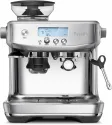
2. Breville Barista Pro
Professional espresso in seconds with 3-second heat-up, LCD display, and precision grinding.
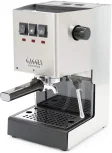
3. Gaggia Classic Pro
Italian-made classic with commercial components for authentic espresso experience.
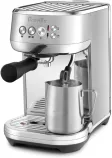
4. Breville Bambino Plus
Compact powerhouse with 3-second heat-up and automatic milk frothing for small kitchens.
💡 Pro tip: Prices update frequently on Amazon. Click to see current deals and compare models.
As an Amazon Associate, we earn from qualifying purchases.
Tips for New Owners
After helping several friends set up their machines, these tips consistently improve results:
Week 1: Build Basics
Use dual-wall baskets exclusively. Focus on consistent dosing and tamping pressure. Aim for 25-30 second extractions before worrying about taste.
Week 2: Master Milk
Practice milk steaming with water and dish soap (seriously, it creates foam for practice without wasting milk). Switch to single-wall baskets once comfortable with basics.
Week 3: Dial In
Start adjusting grind size based on extraction time. Keep a log of settings for different coffees. Experiment with dose amounts.
Month 2: Refine Technique
Temperature surf by pulling shots at different times after the ready light. You'll find your machine's sweet spot. Begin attempting latte art if interested.
Essential Accessories
These accessories dramatically improve your experience:
- - Dosing funnel: $15 - Prevents overflow and mess
- - Knock box: $20 - Easy puck disposal
- - Tamper mat: $15 - Protects countertop
- - Digital scale: $20 - Consistent dosing
Total investment under $100 dramatically improves experience.
Common Problems and Solutions
Sour shots
Grind finer, increase dose, or ensure proper tamping pressure. Usually indicates under-extraction.
Bitter shots
Grind coarser, reduce dose, or lower brew temperature. Indicates over-extraction.
Channeling (uneven extraction)
Improve distribution before tamping. Consider WDT tool for breaking clumps.
Weak steam pressure
Descale machine, clean steam wand tip thoroughly. Ensure proper water level.
Grinder jamming
Remove hopper, clear stuck beans. Avoid oily dark roasts that clog more easily.
Long-Term Ownership Experience
Six months reveals patterns that week-long reviews miss. The machine's consistency impresses me most, no degradation in performance despite heavy use. Thermal stability remains excellent even after dozens of drinks during entertaining.
Minor annoyances emerged over time. The grinder retention bothers me more now than initially. The drip tray fills quickly with heavy use. The steam wand could use another inch of length. But these remain minor compared to the overall positive experience.
Reliability gives confidence. No mechanical issues, no electronic glitches, no unexpected behaviors. Forums confirm this matches most users' experiences. The two-year warranty provides peace of mind, though I haven't needed it.
The learning curve transforms from frustration to appreciation. Skills developed on the Barista Express transfer to any espresso machine. The pressure gauge teaches extraction theory practically. Manual operation builds understanding automatic machines never provide.
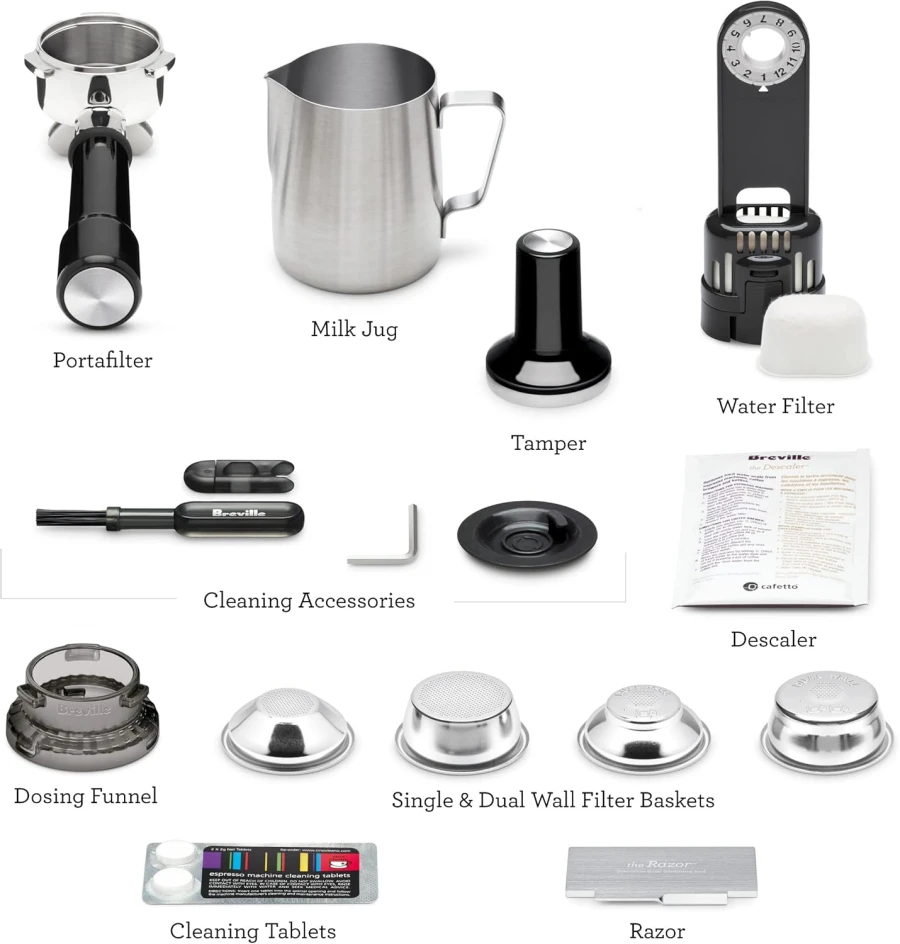
Value Proposition
At $500-700, the Barista Express occupies an interesting market position. It costs more than entry-level machines but less than prosumer separates. The value depends entirely on your perspective. If you're shopping on a tighter budget, explore our guide to the best espresso machines under $500.
Compared to daily café visits, payback happens within 3-4 months. A $5 daily latte becomes $0.50 at home after bean costs. The math becomes even better for multiple daily drinks or household use.
Against comparable all-in-one machines, few match this feature set near this price. The Sage Barista Express (identical but UK branded) costs more in Europe. De'Longhi's La Specialista comes close but lacks the proven reliability record. For a complete brand comparison, see our Breville vs De'Longhi comparison.
The integrated grinder saves $200-400 versus buying separately. While audiophiles buy separate components, the integration convenience and space savings matter more for most users. Counter space has value too.
Breville Barista Express
All-in-one espresso machine with built-in grinder and pressure gauge for café-quality coffee at home.
- Built-in grinder with 18 settings
- Analog pressure gauge for learning
- 45-second ThermoCoil heat-up
- Best value in its class

*Price and availability may vary. Click to see the latest offers.
Breville Barista Express
All-in-one espresso machine with built-in grinder and pressure gauge for café-quality coffee at home.
- Built-in grinder with 18 settings
- Analog pressure gauge for learning
- 45-second ThermoCoil heat-up
- Best value in its class
Who Should Buy the Barista Express?
Perfect for:
- - Coffee enthusiasts ready to learn proper espresso technique
- - Households wanting café-quality drinks without café prices
- - Anyone with limited counter space needing an all-in-one solution
- - Gift-givers looking for an impressive, complete coffee solution
- - Former café workers wanting home equipment that feels familiar
Consider alternatives if:
- - You demand push-button convenience (check out automatic coffee machines)
- - Speed matters most (Barista Pro heats in 3 seconds)
- - You already own a quality grinder (consider Bambino or Gaggia Classic)
- - Budget is extremely tight (Stilosa or Dedica cost less)
- - You want commercial-grade upgradeability (Gaggia Classic Pro)
Frequently Asked Questions
Is the Breville Barista Express worth it?
Yes, the Barista Express is worth it for serious home baristas. At $500-700, it offers commercial-grade features like a built-in grinder, pressure gauge, and quality steam wand. You'll save money versus buying separate grinder and machine, and it produces café-quality espresso once you master the learning curve.
How long does the Breville Barista Express last?
With proper maintenance, the Barista Express typically lasts 5-10 years. Key to longevity is regular descaling (every 2-3 months), daily cleaning, and using filtered water. The 2-year warranty covers initial issues, and replacement parts are readily available for common wear items.
What grind setting should I use on Barista Express?
Start with grind setting 8-10 for medium roasts, 5-7 for dark roasts. The ideal setting produces a 25-30 second extraction for a double shot (60ml in 25-30 seconds). Adjust finer if extraction is too fast, coarser if too slow. Every coffee requires slight adjustments.
Can beginners use the Breville Barista Express?
Yes, beginners can use the Barista Express, but expect a 2-4 week learning curve. The pressure gauge provides visual feedback for learning, and the included dual-wall baskets are forgiving for beginners. Start with dual-wall baskets, then progress to single-wall as skills improve.
What's the difference between Barista Express and Pro?
The main differences are heating speed (45 seconds vs 3 seconds), display (analog gauge vs LCD), and grind settings (18 vs 30). The Pro heats faster with ThermoJet technology and offers more precise control, but the Express provides better value and the pressure gauge helps beginners learn.
Do I need a separate grinder with Barista Express?
No, the built-in conical burr grinder is adequate for most users, producing consistent grounds for espresso. Advanced users might want a separate grinder for ultimate control, but the integrated grinder handles 90% of coffee needs perfectly well, saving counter space and money.
How do I clean the Breville Barista Express?
Daily: Rinse portafilter, wipe steam wand, empty drip tray. Weekly: Clean shower screen, run cleaning cycle with tablet. Monthly: Clean grinder with brush, deep clean steam wand. Every 2-3 months: Descale the machine. Regular cleaning ensures optimal performance and longevity.
Final Verdict
After six months and over 1,000 drinks, the Breville Barista Express has earned permanent residence on my counter. It's not perfect, the learning curve frustrates initially, the heat-up time feels dated, and grinder retention annoys purists. But these flaws pale against its strengths.
This machine teaches you to make espresso, not just push buttons. The pressure gauge provides invaluable feedback. The build quality justifies the price. Most importantly, it produces genuinely exceptional coffee once you understand its personality.
The Barista Express succeeds because it respects both the craft and the user. It demands effort but rewards it generously. It includes everything needed but doesn't oversimplify. It costs enough to be serious but not so much as to be prohibitive.
For anyone serious about home espresso who values learning over automation, the Barista Express remains the benchmark all-in-one machine. Six months later, I'm not just satisfied with my purchase, I'm genuinely attached to this machine that's become part of my daily ritual. To see how it compares to other top models, check out our comprehensive top 10 coffee machines guide.
Rating: 4.5/5 Stars
The half-star deduction reflects the dated heating system and minor grinder limitations. Everything else exceeds expectations for the price point.
Breville Barista Express
All-in-one espresso machine with built-in grinder and pressure gauge for café-quality coffee at home.
- Built-in grinder with 18 settings
- Analog pressure gauge for learning
- 45-second ThermoCoil heat-up
- Best value in its class

*Price and availability may vary. Click to see the latest offers.
Breville Barista Express
All-in-one espresso machine with built-in grinder and pressure gauge for café-quality coffee at home.
- Built-in grinder with 18 settings
- Analog pressure gauge for learning
- 45-second ThermoCoil heat-up
- Best value in its class
Ready to start your espresso journey? The Barista Express frequently goes on sale, especially during Black Friday and Prime Day. Check current prices through our links above. Questions about getting started? Send them my way at info@coffeebrewshub.com, I respond to every serious inquiry.
Related Articles
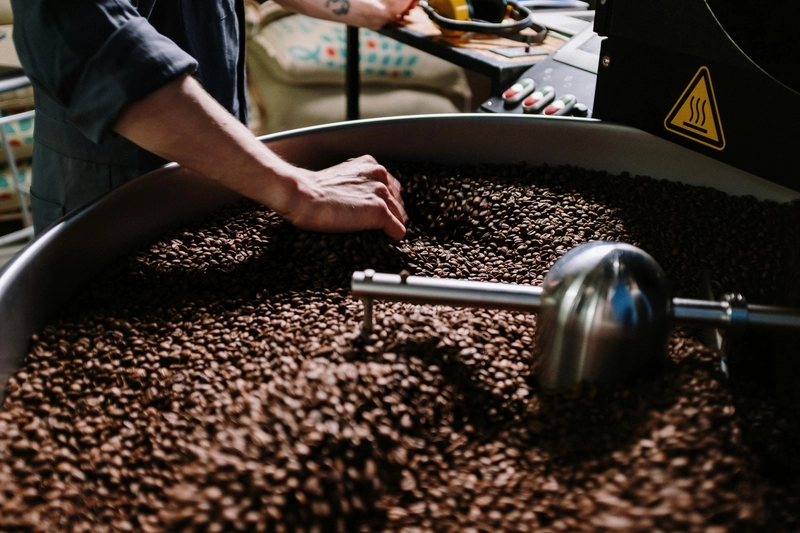
Top 10 Best Coffee Machines for 2025→
A comprehensive guide to the best coffee machines for every budget and need. Compare features, prices, and find the perfect machine for your home.
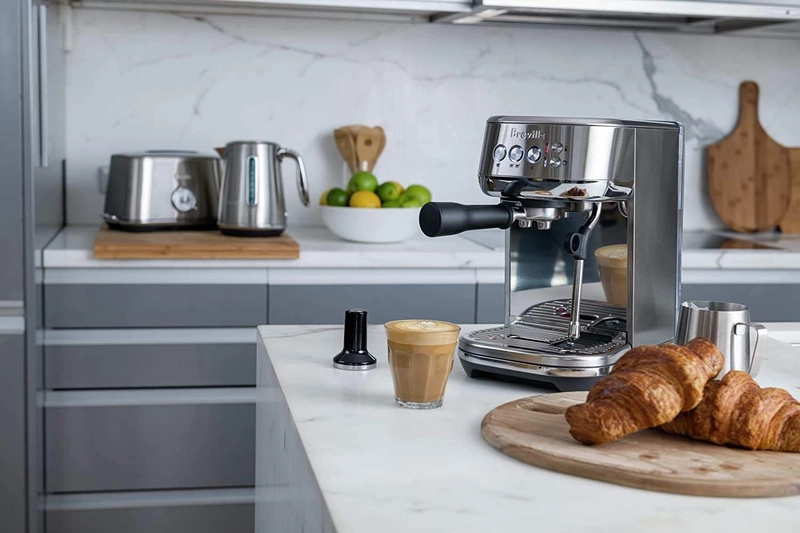
Breville Barista Express vs Pro: Which Should You Buy?→
A detailed comparison of the Breville Barista Express and Pro espresso machines. Explore features, performance, and value to find the best fit for your coffee needs.
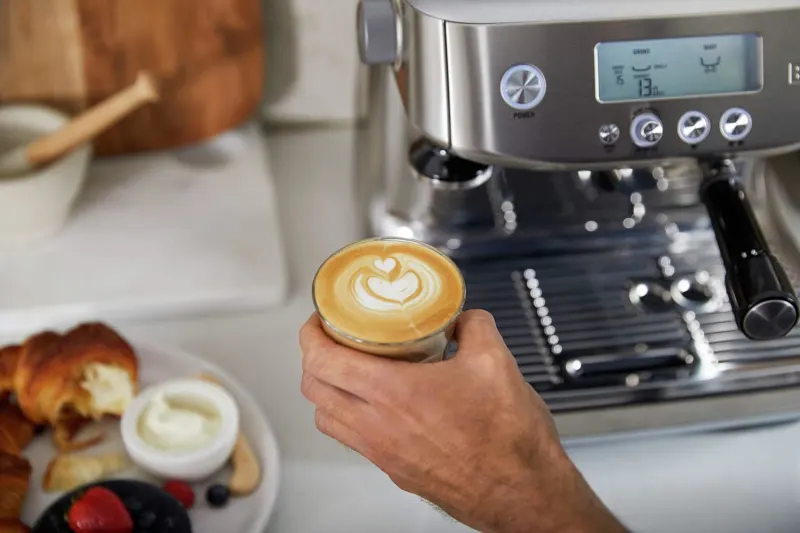
Breville vs De'Longhi: Which Makes Better Espresso?→
A comprehensive comparison of Breville and De'Longhi espresso machines. Explore features, performance, and find the best fit for your coffee needs.
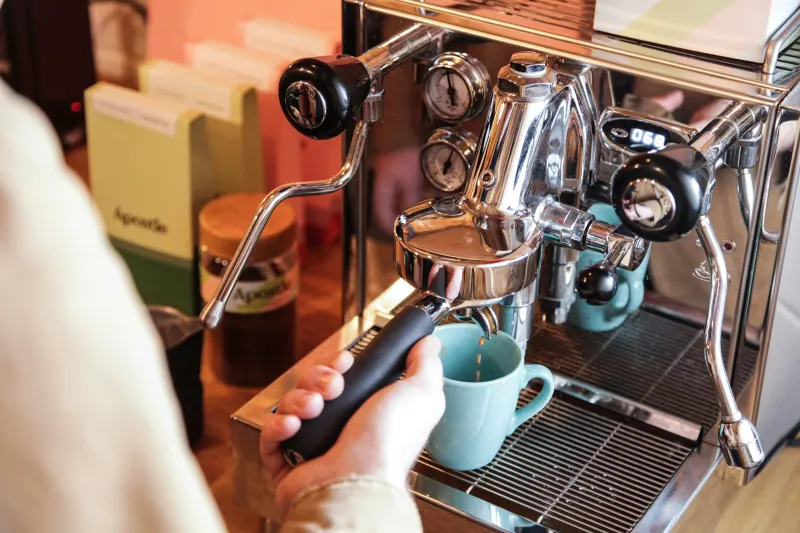
10 Best Espresso Machines Under $500 (2025 Guide)→
Expert reviews of the best espresso machines under $500, find your perfect machine with real testing results.
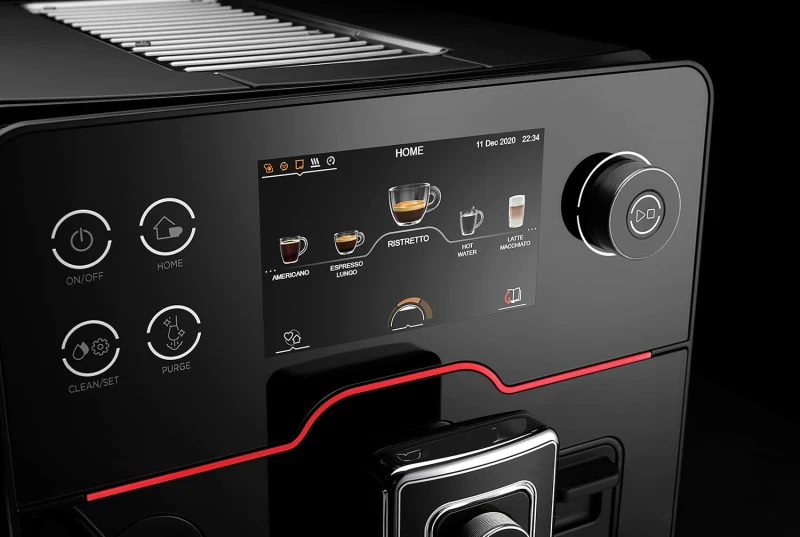
Breville vs Gaggia: Which Espresso Machine is Right for You?→
A detailed comparison of Breville and Gaggia espresso machines. Explore features, performance, and value to find the best fit for your coffee needs.
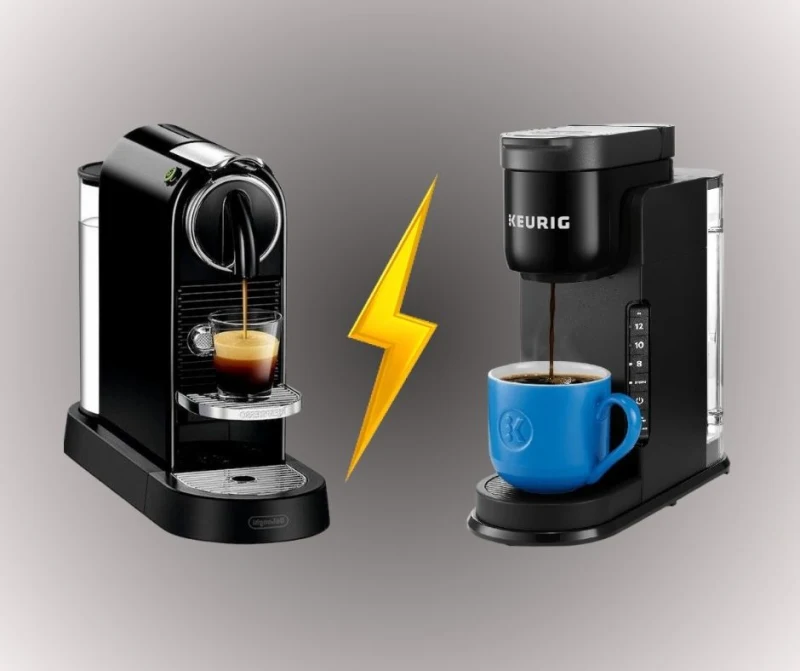
Nespresso vs Keurig: Which Pod System is Best?→
A comprehensive comparison of Nespresso and Keurig pod coffee systems. Explore features, coffee quality, and find the best fit for your lifestyle.

James Wilson
Coffee Expert & Product Reviewer
James has been reviewing coffee equipment for over a decade, helping thousands of coffee lovers find their perfect brew.
